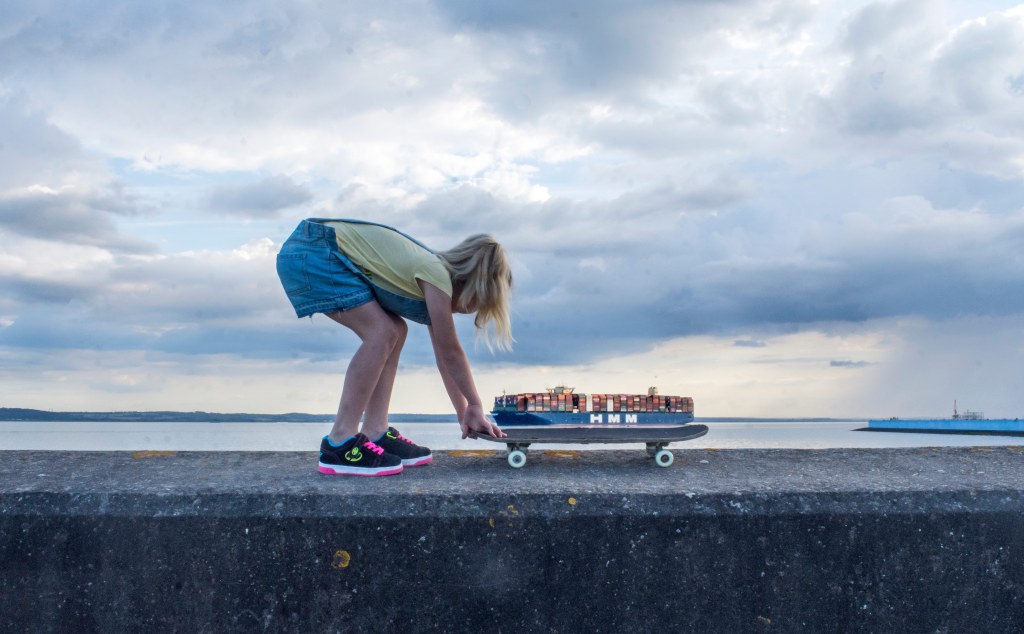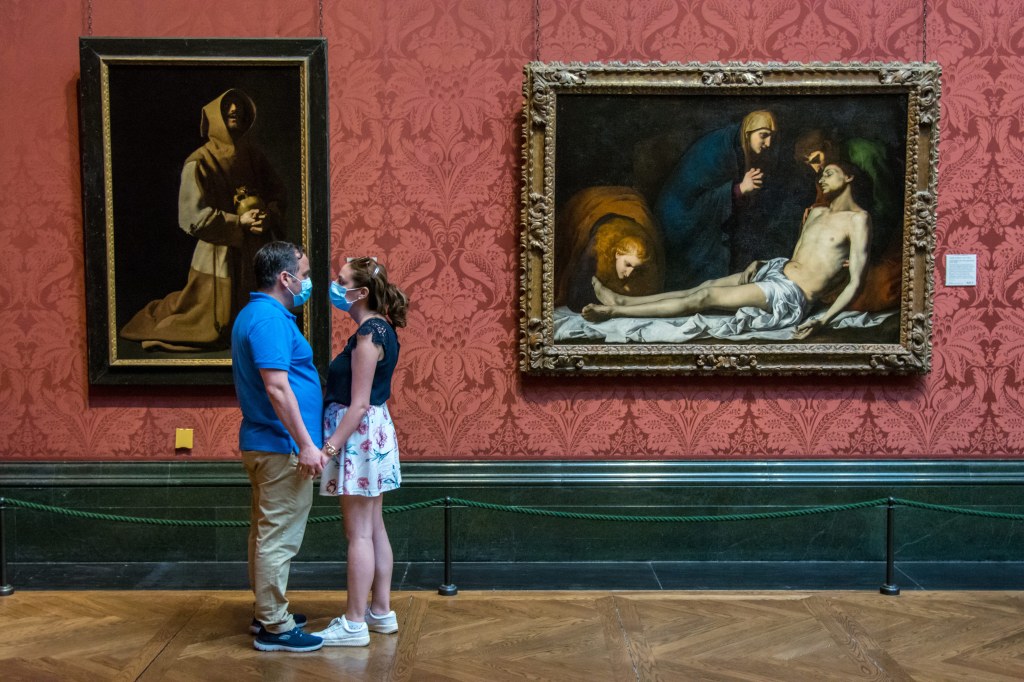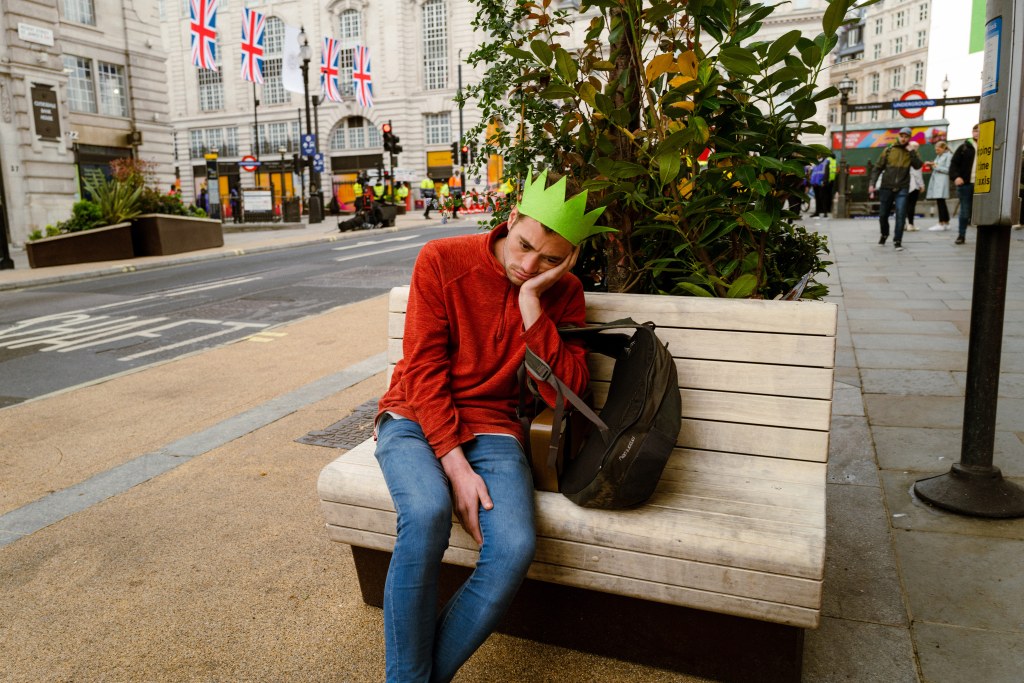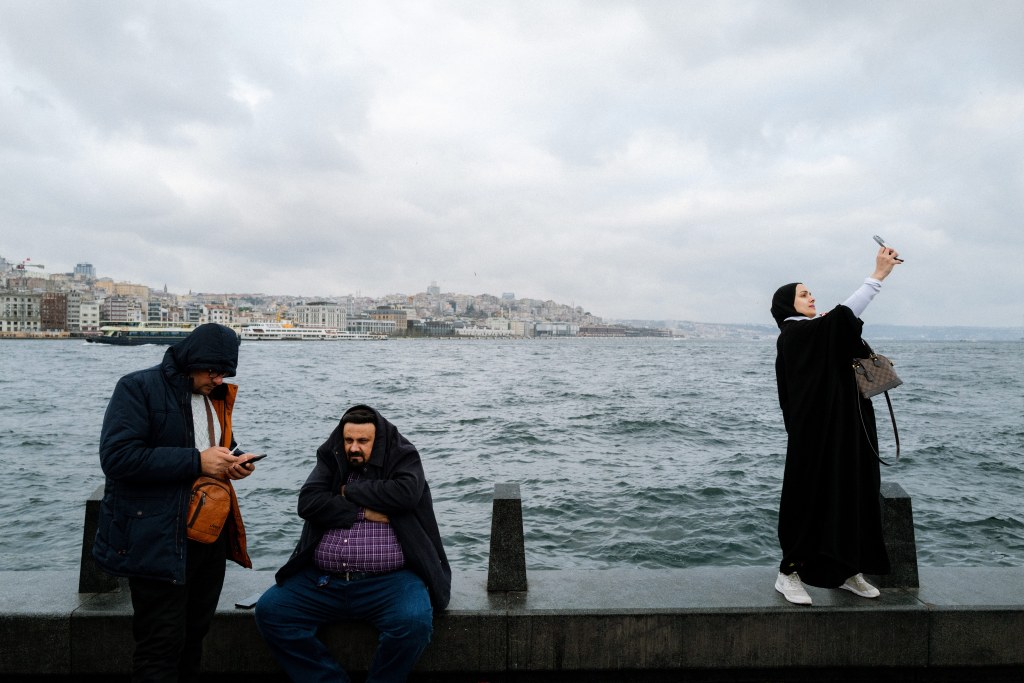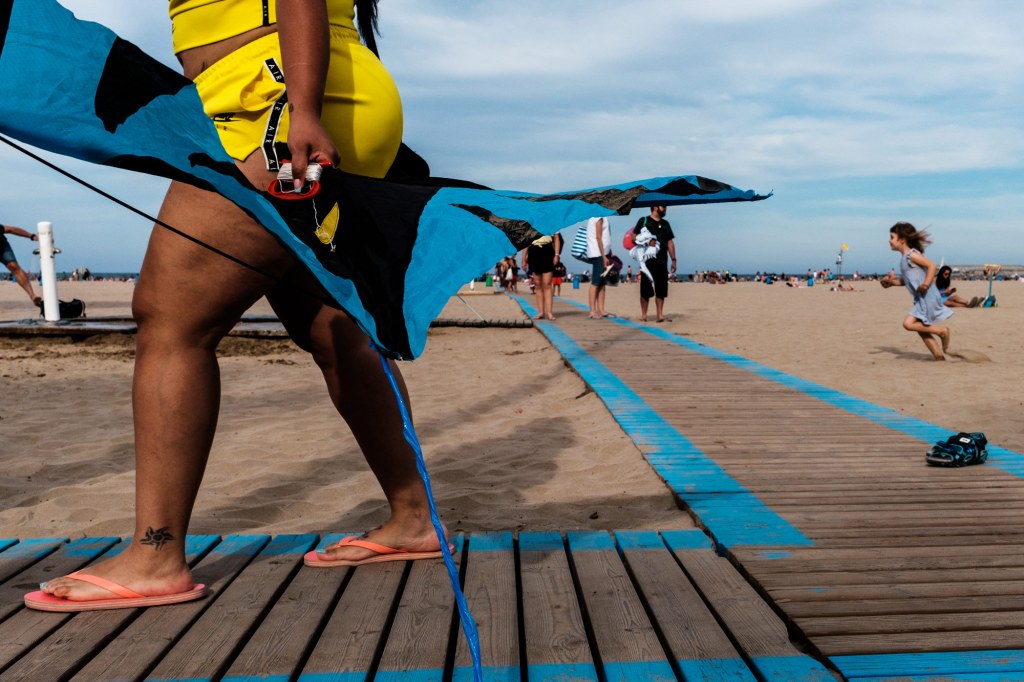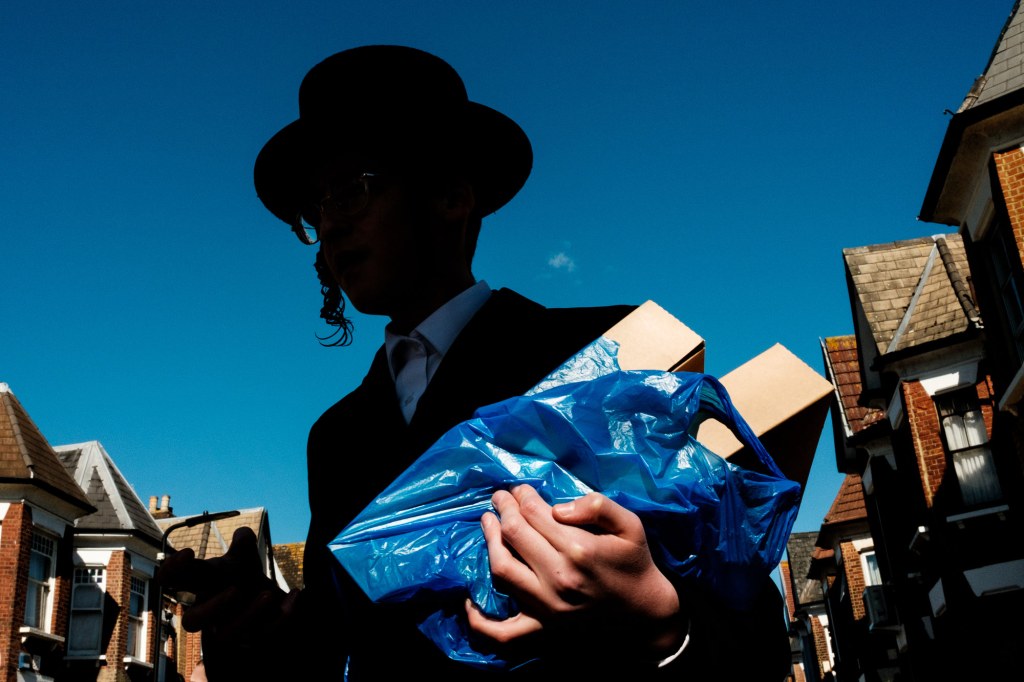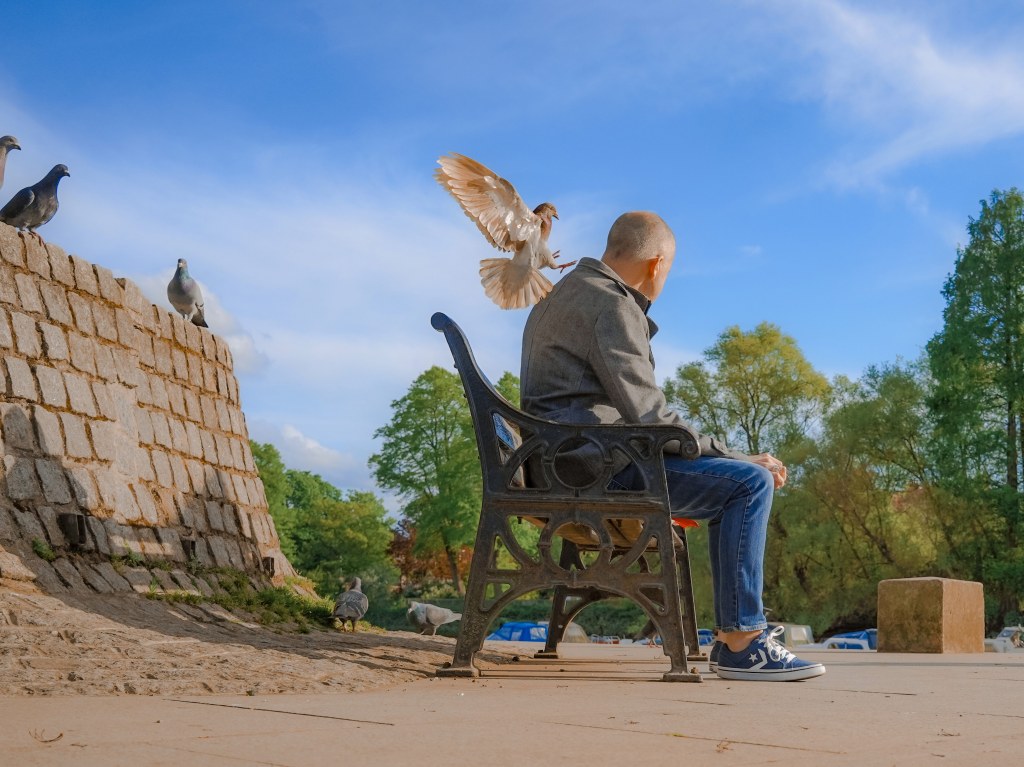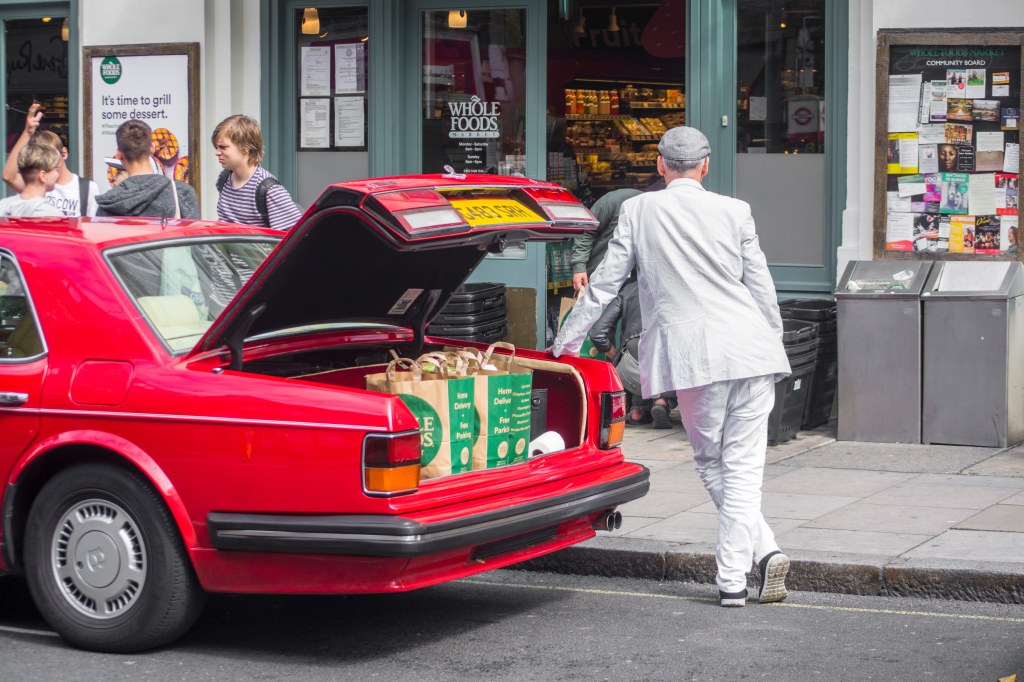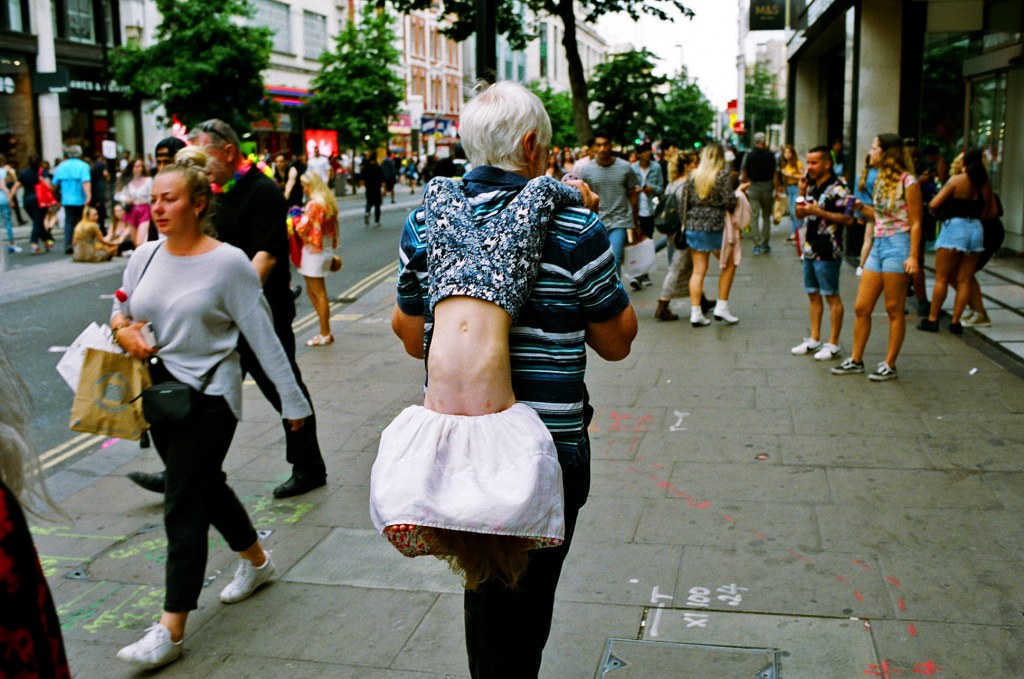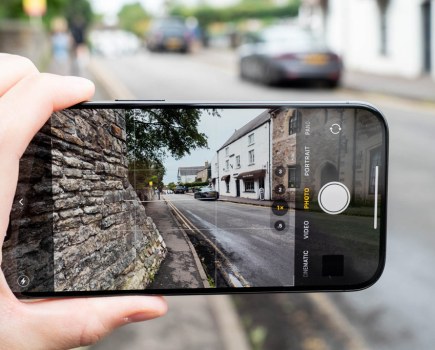If every photographer throughout history abided by a strict ethical code of conduct, we would be unlikely to have some of the world’s greatest photographs from street photography masters. As citizens we are increasingly being surveyed, recorded and documented. Everybody has a camera for posting pictures of themselves on social media and yet the desire to protect privacy is higher than ever.
The street photographer’s duty is to elevate the world into something aesthetic, to deliver a narrative that presents it in an interesting way – but can it be done ethically, so as not to compromise those being photographed, and bring disrepute on the genre?
Some legal guidance for the UK can be found in our piece on street photography and the law .
Is it ever okay to photograph children, the vulnerable and homeless?
Polly Rusyn (PR): “Children are the best subjects for street photography. They’re awesome, animated, doing something, uninhibited. If we stop photographing children then people in a hundred years’ time, if this planet is still here, will look back and their only reference of kids is in Tik Tok videos with bunny rabbit filters. You look back at the classic photos of Vivian Maier and Henri Cartier-Bresson, kids, kids, kids, everywhere and it’s just wonderful to see what play looked like. I feel it’s an injustice to the future to not photograph children.”
Danny Jackson (DJ): “You can name all the greats and there’s pictures of children because you’re photographing humanity and what’s humanity without children?
“It’s your moral standpoint, it’s why you’re taking pictures of them. It’s no good just taking the picture of someone laying on the street because really it’s almost like you’re in their home. They live on the street so they’ve got no way of stopping you, just like someone that lives in their house.
“If you came into someone’s bedroom and took their picture, that’s wrong. In a way that’s the same for the homeless but on the other hand if they’re interacting with someone and if they’re doing something interesting on the streets, then I think that’s fair game.”
Mike Chudley (MC): “Taking photos of homeless people for example is a bit of a line, but in the right context that could be an incredible photo. If you see something worth taking a photo of, I feel like you should take the photo then consider what to do with it after.”
Josh Edgoose (JE): “I would never show a picture of someone eating. Just a personal rule. I would never take a photo or show a photo of a homeless person unless it was of a wider scene, adding context, having more of a message or something behind it.”
How close is too close?
One of the most contentious discussions in street photography is the jab and dash and flash approach. How close should you physically get when taking someone’s photograph and when does it cross the line into harassment? The discussion inevitably revolves around Bruce Gilden. I’ve not been able to confirm, nor any of the photographers I spoke with could recall, an incident where a street photographer has caused harm to a citizen, yet.
PR: “I do wonder if that happens, especially if it’s extreme like Gilden, somebody could have a weak heart and if somebody jumps out at you and is taking pictures, you could literally kill somebody.”
DJ: “The only thing I’d probably say I’m a little bit against is really getting in someone’s face as if it’s the shock value. I like Gilden’s work, I think it’s brilliant but it’s not something I would do. I couldn’t just go up to someone and put it right in their face and take it and then walk off.
“The famous photo Gilden took of the two old ladies, it’s a funny photo but I think at night in New York flashing people in the face, ethically for me, especially women, could scare people and that’s the only thing that puts me off that idea.”
Stephen McLaren (SM): “There are people who shoot indiscriminately believing, it’s my rights and I’ll do what I want, bugger you mate, it’s public – well that’s just a specific person, in my book. People who think that putting a lens in front of someone indiscriminately is the way to make an artistic contribution to the world I think are largely misguided and don’t have many good photographs. That said, I’m open to all kinds of photography. I’m glad Gilden’s in the world shooting photographs. Would I do some of the stuff he does? No, I wouldn’t.”
How far is too far in street photography? – Conversely, is using a long lens unethical, depriving the person you’re photographing the opportunity to respond and interact?
MC: “Most people will start street photography and pick a 50mm, 85mm, 110mm lens and shoot from two streets away. You’d get a good-quality photo but it’s not a quality documentation of what’s happening because it’s probably going to be an isolated portrait of someone. For me that isn’t as fun as a 35mm or 28mm context-wide lens storytelling photo. There’s going to be more context to the storytelling.
“The quality of the street photo is harder to achieve if you go wide so a great street photo at 28mm is hard to do, you’ve got layers, you’ve got different things spaced throughout the frame, it’s going to be tricky to get a really quality photo. Whereas if you pick an 85mm up I think it’s quite easy to stick that at f1.8 and get a nice picture. If you want to develop and improve your street photography, going for a 28mm or 35mm will teach you a lot more.”
DJ: “I do use a long lens when there’s a big event with lots going on and sometimes I’ll see something and I’ll know there’s no chance of me getting to that situation without just getting the lens out. It’s there. I tend to use 28mm and 50mm mostly now though.”
JE: “I mainly use 35mm or 28mm. I’ve been trying 50mm a bit recently because I’ve been pushing around a pram. 85mm makes me feel motion sick.”
De-escalation – if you dip into social media you’d be forgiven for thinking street photographers are in daily danger from upset citizens. These moments are rare for most, but what do you do if you have a face-off?
DJ: “Most of the time I try to explain what I’m doing but you’ll quickly know if that’s going to work or not. And if it doesn’t work I’ll say I’ll take the picture away, I’ll delete it in front of you. I can always find that deleted photograph if I wanted to! It’s so rare that you get a great photograph, one that you’re really pleased with. It’s unlikely to be anything special anyway. Most of the time I get caught I’m very good at disguising it. I bring the camera to my face, I’ll take the picture and if someone makes eye contact, I’ll then take another picture and I’ll bring it down and I’ll be looking above them and it works so often.”
PR: “The worst I’ve ever had is two finger wags and somebody recently in Seville asking did you take my picture? When I associate a photograph with a negative emotion I don’t want it any more.”
JE: “The only issue I’ve had was years ago when I was a bit less confident. People pick up on that if you’re being a bit sneaky, if you have that vibe where you’re doing something you shouldn’t be doing. In the last couple of years, if people ask, did I take their photo? I say yeah I did, you do look amazing; if they ask to take it off the camera, yeah sure that’s fine, have a lovely day.”
What exactly is a public space? The beach, Lido, pub, playground, church and arcade – are they legitimate locations?
MC: “I would think if it’s run by a private business that is not public; but if it’s where there are crowds of people and anyone can walk anywhere then I feel free range for my photography. If I’m entering a space which is operated or managed by a company or people where there might be security or shop owners, if there’s anything that requires some sort of entry with people then I’ll probably just check what I’m doing. It’s hard to say because every place is so different but if people are walking freely I’m going to take photos freely.”
SM: “I would consider the underground a public place. The number of photography books that are set there, most of them are great. It tells you so much more about urban humanity than probably any other space I think.”
Stephen Leslie (SL): “If I’m walking down the street and I see something happening in front of me in public, then I usually consider that to be fair game and I take the photograph. I would never take a photograph of someone doing something that is terrible to a child, if a man and a woman are having a stand-up fight I very much doubt I would take that photograph because that’s like a private moment but if it’s two strangers having a fight I might take that photograph because it’s happening in public. If we didn’t take those sorts of photographs, I think street photography history would be poorer for it.”
Should the person you are photographing retain anonymity in street photos?
SL: “I did a YouTube video about the prevalence of silhouettes in street photography. I hate silhouettes, I think they’re awful, an absolute menace, they’re everywhere. The reason that they’re everywhere is people are afraid of showing what people look like and a silhouette is a very good way of doing street photography without betraying or intruding on other people’s identity.”
PR: “I’ve noticed the majority of my work maintains people’s anonymity! I’m working on a book to showcase creative ways to shoot anonymous subjects in street photography to try to prove the point that you don’t actually need to show faces.”
When not to take a photo in street photography
MC: “Sometimes I’ll see a scene and think, you know what, I’m going to keep my camera down because I don’t want to take that photo. That comes down to the situation, maybe I’m not feeling as confident for that moment or it’s the first moment of the day and I’m thinking I’m not ready for that yet. The individual in that moment is a big part to play rather than the outcome of the photograph.”
DJ: “I’m of the view that really you should think about ethics afterwards, when you’re editing and seeing how the story is unfolding because sometimes you could take a picture and it might mean something to you because you were in the moment, you know exactly what’s going on but when you view the picture afterwards you can see how someone else might view it and it might not work. That story you created might not come through in the right way. So I think take those pictures of drunks at night, being sick, whatever, they could be really good but also they might just end up on your hard drive forever.”
SL: “You also have to occasionally show the bad side of life. Terrible things do go on and street photography has to be allowed to show the full gamut of life if it’s to be true to life. Otherwise what you end up with is a very saccharine, vanilla, self-policed version of street photography that ultimately is just going to be bland and I don’t think that that’s something to be encouraged.
“I took a photograph once of a person that had fallen asleep in public and they had their hand down the back of their own trousers. l put this up and I had a few people say you shouldn’t do this, this is terrible. I didn’t think it was that bad, you couldn’t see the bloke’s face. I think that’s an example of how people nowadays are a little bit more sensitive to some images.”
Are there ethical differences for rural and urban photography?
SM: “When I’m out in the countryside I’m a tourist because I’m not there very often. I’m there to enjoy all that it has to offer – trees, nature, animals or people. If someone says what are you doing I’ll say I’m a tourist, literally enjoying what’s in front of me and it’s a different part of the world to the one I know. I don’t discriminate there, it can be harder of course. You also get it in suburban areas. The onus is on the photographer to be kind and considerate.”
SL: “I’m more at home in an urban environment because that’s what I’m used to. I don’t think I really change my behaviour when I go outside of that. I certainly don’t change my ethics, I would still photograph whatever.”
JE: “I will shy away from a photo if I’m on a country road and there’s just me and one other person. If you’re in Zone 1 in London the camera is practically invisible and it becomes more visible the further you go out.”
Is it ethical to disguise taking a photograph?
DJ: “If you shoot from the hip and you’ve got a lot of things going on around you, you’ll get those faces, the looks of the people will be completely natural. That’s what’s interesting about the photograph because you haven’t got a smile on their face, you haven’t got someone looking straight at your camera, you’re seeing what they’re seeing, what you would see when you’re walking around. These people are just trying to get a certain artistic look.”
PR: “You’re always going to get a small vocal group who get upset. There was a huge debacle around a photograph that was taken by Paul Kessel in New York on the metro of a young mother. It didn’t help that his description basically said he took pictures of her for 45 minutes [with the camera on his lap] but his intentions were not because she had a short skirt but because it was a beautiful scene and a stunning photograph. It looks like modern-day religious iconography. All the people who were getting upset about it who were not photographers. It was really excessive, and I felt sorry for him at the time.”
Should there be an official ‘go to’ resource of ethics?
MC: “There should definitely be a rough guide of do’s and don’ts and I think that is picked up organically by our experience. The ten or 11 street photographers that I bump into regularly in London, we kind of all go about it in the same way, give or take. We’re respectful, we’re never rude and that goes a long way, your body language goes a long way. We all get different types of photos. There’s a rough guide out there subconsciously among street photographers that have got experience.”
SL: “There isn’t a resource. Who is anyone to get on a soapbox and say this is what you should and shouldn’t do about it.”
Street photography ethics abroad
MC: “I do the same thing as I would normally but I’d be lying if I said there isn’t a little bit more hesitation because I don’t know my surroundings. I feel like there’s an inherent respect for the country I’m in and I have to be aware of that because it’s going to be a little bit different. I check the laws as well.”
SM: “If you’re in a rough part of Los Angeles you’ve got to be streetwise, you’ve got to know what might happen if something goes wrong as someone might have a gun, you’ve got to know the homeless person on the corner who is about to inject drugs is not a good person to photograph.”
Should cultural sensitivities be taken into consideration?
PR: “I want to be respectful of who I photograph, I don’t want to disturb anybody that I photograph. I prefer to be stealthy so I don’t bruise the scene and certainly don’t bruise the person’s day and if a photograph is unkind, unflattering or potentially incriminating I won’t share it if it makes me feel uncomfortable. I want us to be ethical photographers to protect street photography as a genre.
“To not criminalise it, to keep it legal. I don’t look back at the past masters and think, you unethical b******s or judge what they were doing in any way, apart from Gilden, but now we live in very different times, we have to move differently in order to be able to continue doing what we love. If we piss too many people off, the wrong people or kill someone, we’re going to be done.”
SM: “We all have to justify our photographs at some point in one way or another, whether it’s online or in a gallery setting or a journalist interviewing us. If someone comes up and says; well why did you take that picture because it looks a bit dodgy, you really should have an answer ready for them and be able to explain yourself. If ultimately I’ve made a bad decision I’d be willing to delete it or withdraw it.”
SL: “If someone’s out in public, it’s 2023 for Christs sake, people know that people take photos, lots of people have the most enormous bloody cameras anyway, if you see someone raising their camera towards you and you don’t want to have your photo taken just look the other way, it’s very simple.”
How to be an ethical street photographer: Conclusion
Morals are the principles on which one’s judgements of right and wrong are based. Ethics are principles of right conduct. You can photograph within the law but still be unethical; ethics are your own personal laws. Changes in law to prevent up-skirting and the creation of new offences by the government of recording images of women breastfeeding children without their consent haven’t been brought about by unethical street photographers. Street photographers practice their art in myriad ways. If you’re an adult amateur or professional street photographer, you should know what feels right to photograph, and how.
The last word should be left to one of the best, Joel Meyerowitz, who writes in the book How I Make Photographs (Laurence King Publishing, 2020) “We must be humble enough to recognize that we’re all humans, and we come in every shape, size and colour. You’re not making fun of anybody; you’re telling it like it is. This is how the world looks, and these are the ways people interact.
“I believe everyone is fair game as long as you’re not trying to take advantage or being cruel. From a humanistic point of view, the sweetness of photography is its capacity to embrace everybody in every kind of situation and to make works that come from the heart.”
Stay up to date with the law around street photography.
Mike Chudley is a young street photographer with over 86K subscribers to his YouTube channel: www.youtube.com/c/mikechudley
Josh Edgoose is co-founder of Framelines magazine and has two books of his street photography published by Setanta Books, Brilliant Parade and 10 Miles West. www.setantabooks.com
Danny Jackson is one half of the multi-online platform @street_badass
Stephen Leslie is author of several street photography books and creator of the Show and Tell films YouTube Channel: www.youtube.com/@stephenlesliephoto/videos
Stephen McLaren has edited various photography books including best-seller Street Photography Now. www.stephenmclaren.co.uk
Polly Rusyn has self-published several street photography books and is founder of the Department of Street Photography: dostreetphotography.com
APOY 2023 Round 7, Street, is now open click here to submit your images until the 21st August 2023.
Further Reading on Street Photography:
The best cameras for street photography
Best lens for street photography
How to be street smart as a photographer
Follow AP on Facebook, Twitter, Instagram, YouTube and TikTok.


